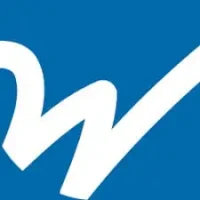Do you receive interest, dividends, self-employment income, capital gains, passthrough, or other non-payroll income? If so, you may be a good candidate that should consider paying quarterly estimated tax payments. If you don’t have enough federal tax withheld from your paychecks and other revenue sources, you may be required to make quarterly estimated tax payments; if you don’t, the IRS will assess underpayment penalties.
Below are the applicable rules for paying estimated taxes and avoiding underpayment penalties.
When are the estimated tax payments due?
To avoid underpayment penalties, individuals must pay in at least 25% of a “required annual payment” by April 15, June 15, September 15, and January 15 of the following year. If one of these dates falls on a weekend or holiday, the payment is due the next business day.
The fourth installment for 2022 is due on Monday, January 16th, 2023. Estimated tax payments are made using Form 1040-ES.
How much should you pay for each installment?
The required annual payment that individuals must pay to the IRS is lower of 90% of the tax shown on the current year’s tax return or 100% of the tax shown on the previous year’s tax return. The latter is increased to 110% of the tax shown on the return for the previous year if your adjusted gross income (AGI) on your previous year’s return exceeds $75,000 ($150,000 if you are married filing jointly).
Individuals who receive most of their income in the form of wages satisfy these payment requirements through the tax withheld by their employers from their paychecks. Those who make estimated tax payments generally do so in four installments. After determining the required annual payment (after subtracting out taxes withheld for the year), divide that number by four and make four equal payments by the due dates. An overpayment of taxes on your previous year’s tax return can be used towards your earliest installment payments.
The annualized income method is available for some individuals to make smaller (or no) estimated tax payments for their earlier installments if their income flow isn’t uniform over the year. This is common for individuals who receive a large portion of their revenue from a seasonal business. For example, if your income comes exclusively from a business operated in a resort area during June, July, and August, no estimated payments may be required before September 15.
Who is Subject to Underpayment Penalty?
If the required installments are not timely paid, you may be subject to an underpayment penalty. The penalty equals the product of the interest rate charged by the IRS on deficiencies, times the amount of the underpayment for the period of the underpayment. Use Form 2210 to see if you owe a penalty for underpaying your estimated tax and, if you do, to figure the amount of the penalty.
The underpayment penalty doesn’t apply to certain taxpayers – below is a list of circumstances in which the penalty will not apply to you:
- The total tax shown on your return is less than $1,000 after factoring in tax withheld throughout the year.
- You had no tax liability for the preceding year, you were a U.S. citizen or resident for that entire year, and that year was a full 12 months.
- For the Q4 (January 15) installment, you file your return by that January 31 and pay your tax in full.
- You are a farmer or fisherman and pay your entire estimated tax by January 15 or pay your entire estimated tax and file your tax return by March 1.
In unusual circumstances where you cannot make a timely payment, such as a casualty or natural disaster, the IRS may waive the underpayment penalty if they determine that it is unjust to enforce it. You can also apply for a penalty to be waived for reasonable cause during the first two years after you retire (and reach age 62) or become disabled.
Please contact your Wegner CPAs tax advisor if you need help calculating any quarterly tax estimates.


